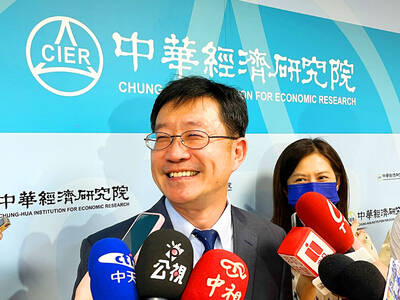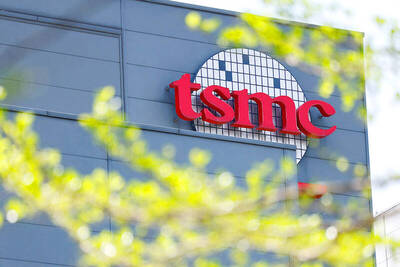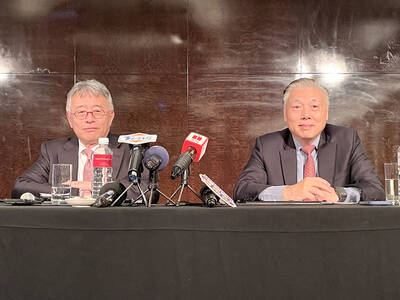Sharp Corp, the world’s second- largest maker of solar batteries, intends to increase its capacity to produce thin-film solar cells six-fold to meet energy demand in Europe, India and the US.
The company will raise the capacity to 6 gigawatts as early as 2014, from 1 gigawatt estimated for 2010, Toshishige Hamano, a vice president in charge of Osaka-based Sharp’s solar-battery division, told reporters yesterday at its factory in Nara Prefecture, Japan.
Sharp, which lost its market-leading position to Thalheim, Germany-based Q-Cells AG last year, is focusing on expanding its solar-cell output through thin-film technology. This uses 1 percent of the amount of silicon needed for conventional models.
“Thin-film solar batteries will be more popular than conventional types because of lower production cost,” Hamano said.
Sharp is aiming for a 50 percent share of the thin-film solar cell market by 2012, Hamano said, without providing a comparative figure.
The company yesterday started shipping solar cells from the Nara plant, which has capacity of 160 megawatts a year using thin-film technology.
It is spending ¥72 billion (US$679 million) to build another thin-film solar battery plant in Osaka, which will have capacity of 480 megawatts.
Separately, The 2008 Taiwan International Photovoltaic Forum will begin next Tuesday at the Taipei International Convention Center, with several top executives from prominent companies in the field invited to deliver keynote speeches, organizers said yesterday.
Taiwan External Trade Development Council (TAITRA) officials said three main topics were selected for this year, including “the current status of and trends in the global photovoltaic industry,” ”the current status of and trends in the global photovoltaic market” and “solar-grade silicon.”
Foreign speakers include Muramatsu Tetsurou, general manager of Sharp’s solar systems group, Erik Thorsen, president and CEO of REC Group, Ernesto Macias Galan, general manager of Isofoton and president of the European Photovoltaic Industry Association, and Lei Ting, vice president of Suntech Power Holdings Co (尚德).
Several executives from local companies such as Auria Solar Co (宇通), Gintech Energy Corp (昱晶), Lucky Power Technology (奈米龍) and Sino-American Silicon Products Inc (中美矽晶) have also been invited.

WEAKER ACTIVITY: The sharpest deterioration was seen in the electronics and optical components sector, with the production index falling 13.2 points to 44.5 Taiwan’s manufacturing sector last month contracted for a second consecutive month, with the purchasing managers’ index (PMI) slipping to 48, reflecting ongoing caution over trade uncertainties, the Chung-Hua Institution for Economic Research (CIER, 中華經濟研究院) said yesterday. The decline reflects growing caution among companies amid uncertainty surrounding US tariffs, semiconductor duties and automotive import levies, and it is also likely linked to fading front-loading activity, CIER president Lien Hsien-ming (連賢明) said. “Some clients have started shifting orders to Southeast Asian countries where tariff regimes are already clear,” Lien told a news conference. Firms across the supply chain are also lowering stock levels to mitigate

Six Taiwanese companies, including contract chipmaker Taiwan Semiconductor Manufacturing Co (TSMC, 台積電), made the 2025 Fortune Global 500 list of the world’s largest firms by revenue. In a report published by New York-based Fortune magazine on Tuesday, Hon Hai Precision Industry Co (鴻海精密), also known as Foxconn Technology Group (富士康科技集團), ranked highest among Taiwanese firms, placing 28th with revenue of US$213.69 billion. Up 60 spots from last year, TSMC rose to No. 126 with US$90.16 billion in revenue, followed by Quanta Computer Inc (廣達) at 348th, Pegatron Corp (和碩) at 461st, CPC Corp, Taiwan (台灣中油) at 494th and Wistron Corp (緯創) at

NEW PRODUCTS: MediaTek plans to roll out new products this quarter, including a flagship mobile phone chip and a GB10 chip that it is codeveloping with Nvidia Corp MediaTek Inc (聯發科) yesterday projected that revenue this quarter would dip by 7 to 13 percent to between NT$130.1 billion and NT$140 billion (US$4.38 billion and US$4.71 billion), compared with NT$150.37 billion last quarter, which it attributed to subdued front-loading demand and unfavorable foreign exchange rates. The Hsinchu-based chip designer said that the forecast factored in the negative effects of an estimated 6 percent appreciation of the New Taiwan dollar against the greenback. “As some demand has been pulled into the first half of the year and resulted in a different quarterly pattern, we expect the third quarter revenue to decline sequentially,”

ASE Technology Holding Co (ASE, 日月光投控), the world’s biggest chip assembly and testing service provider, yesterday said it would boost equipment capital expenditure by up to 16 percent for this year to cope with strong customer demand for artificial intelligence (AI) applications. Aside from AI, a growing demand for semiconductors used in the automotive and industrial sectors is to drive ASE’s capacity next year, the Kaohsiung-based company said. “We do see the disparity between AI and other general sectors, and that pretty much aligns the scenario in the first half of this year,” ASE chief operating officer Tien Wu (吳田玉) told an